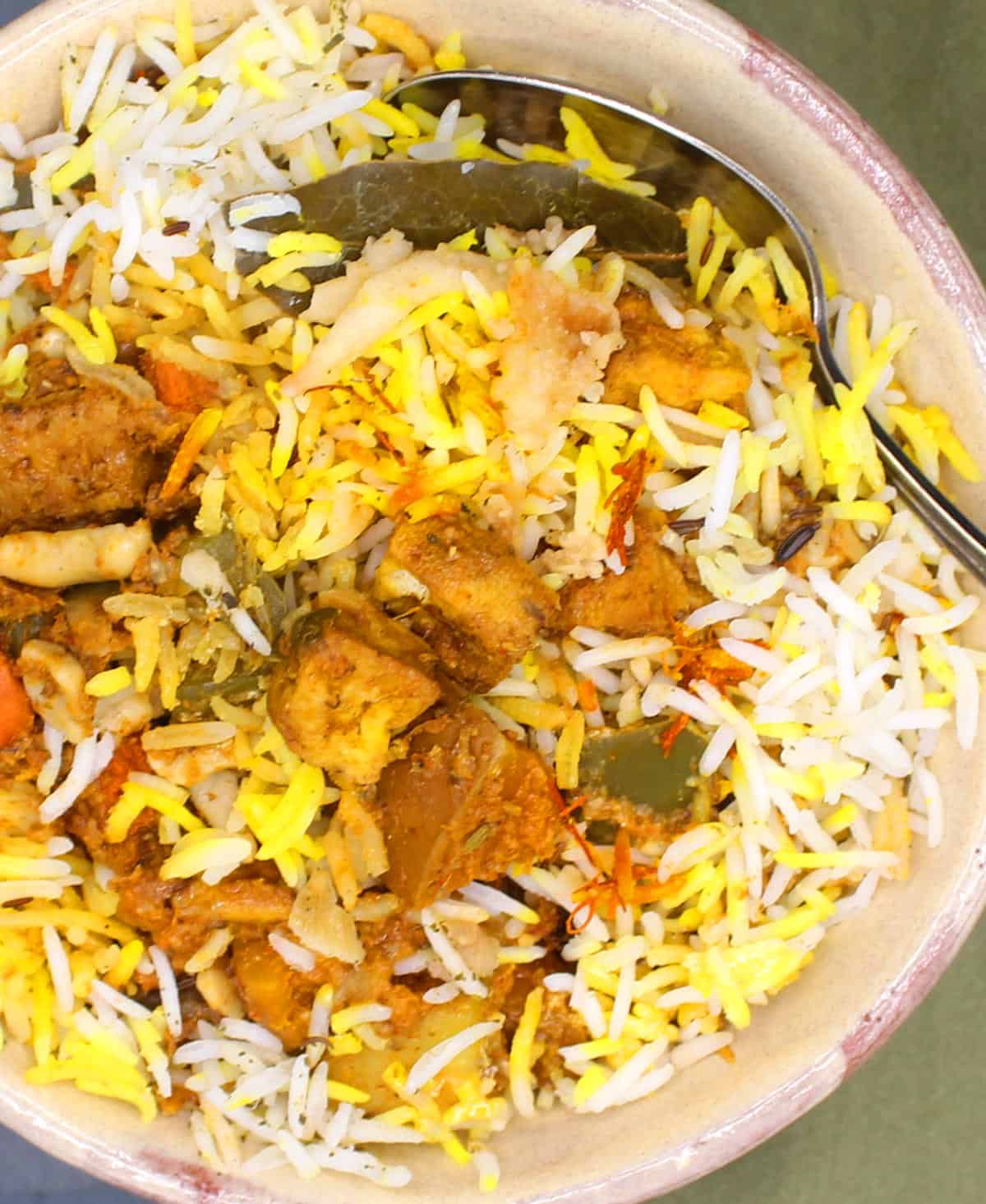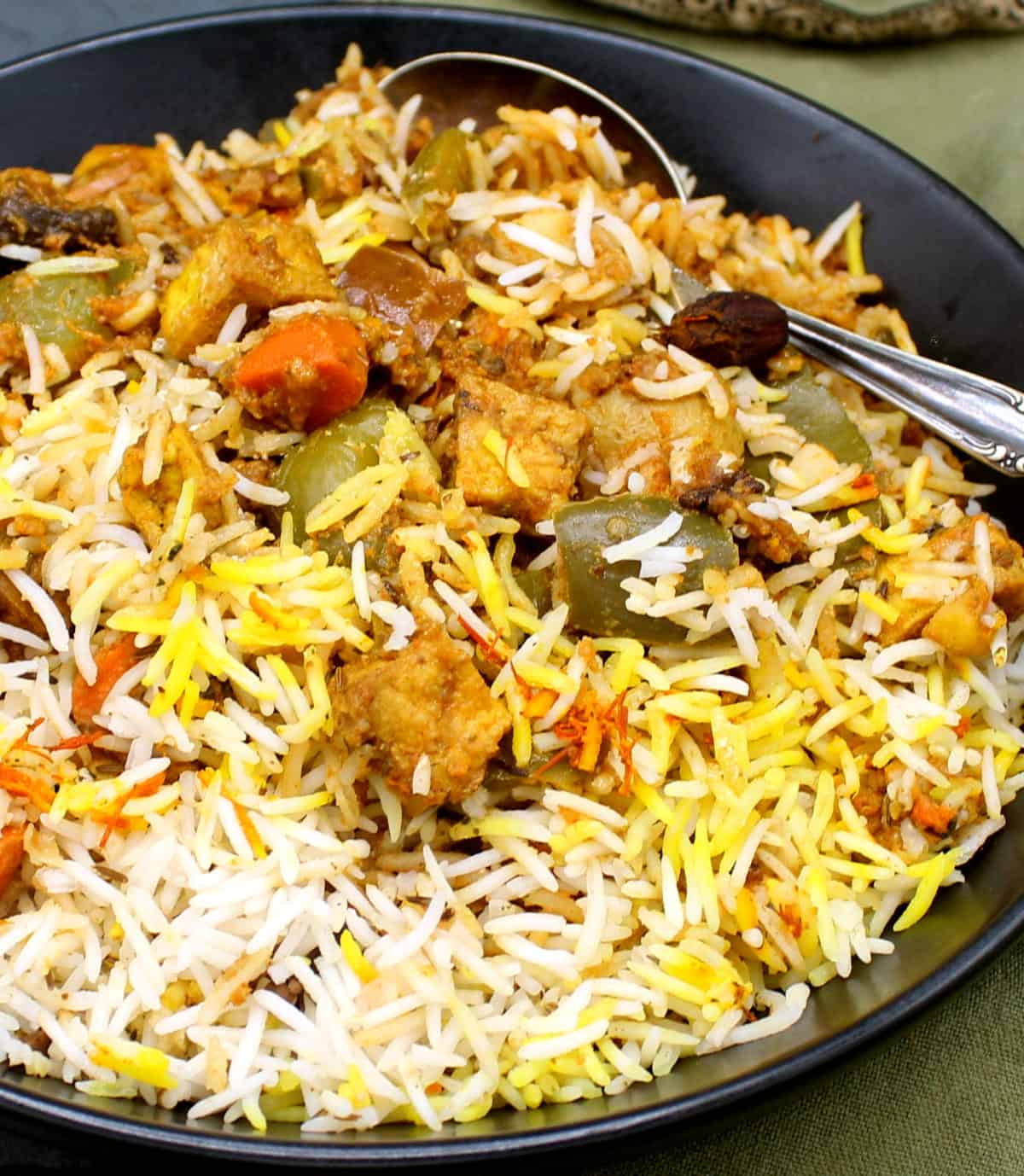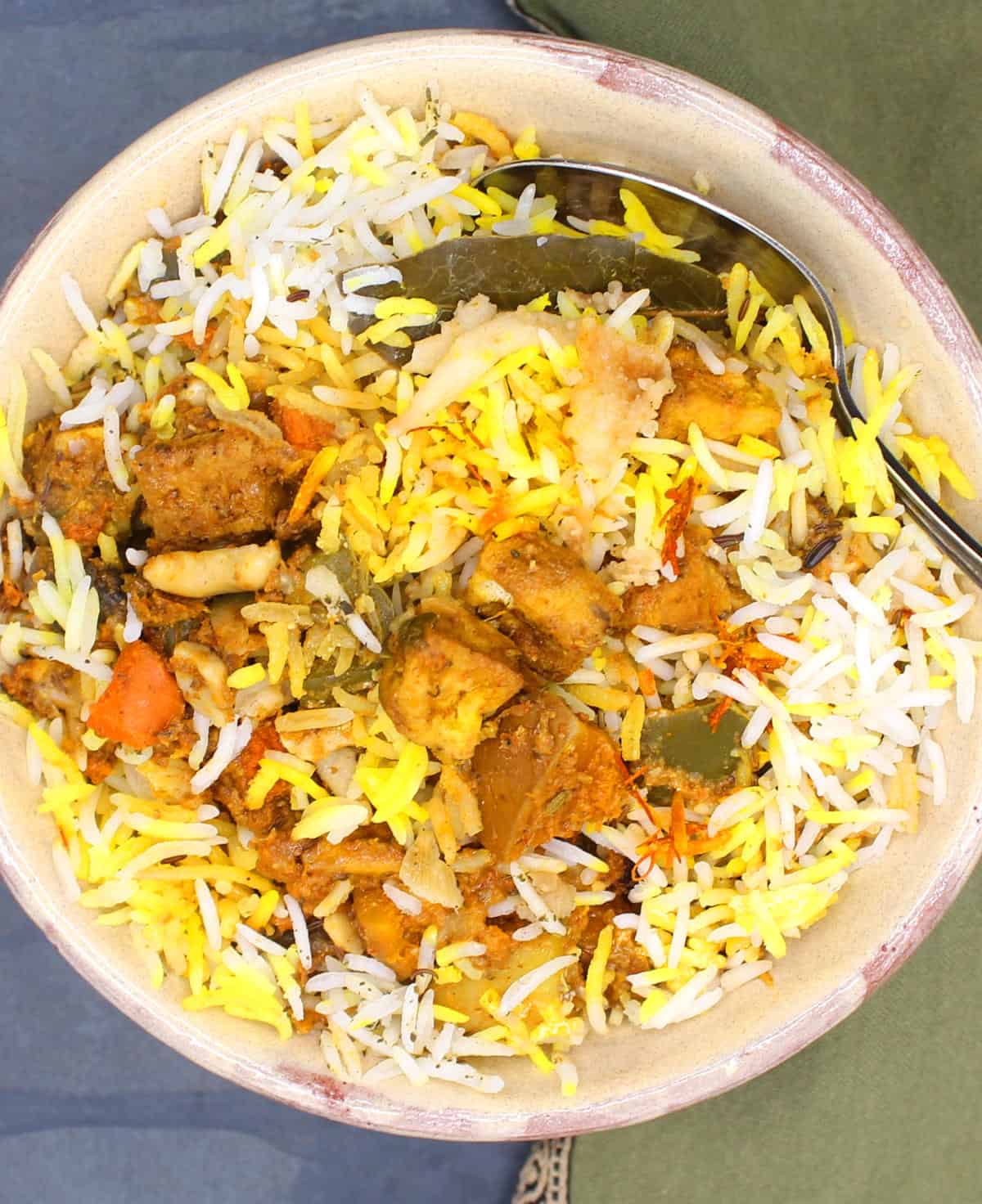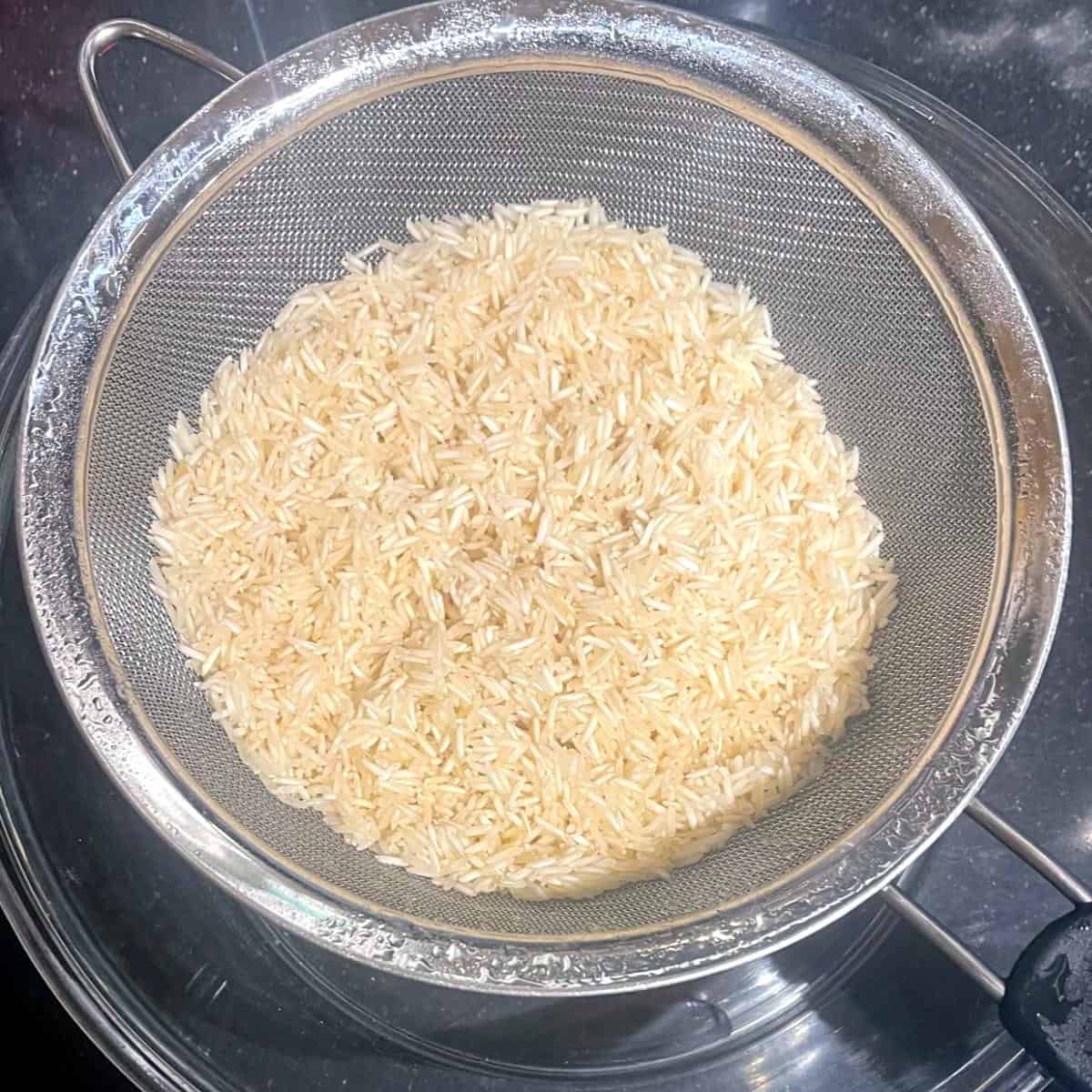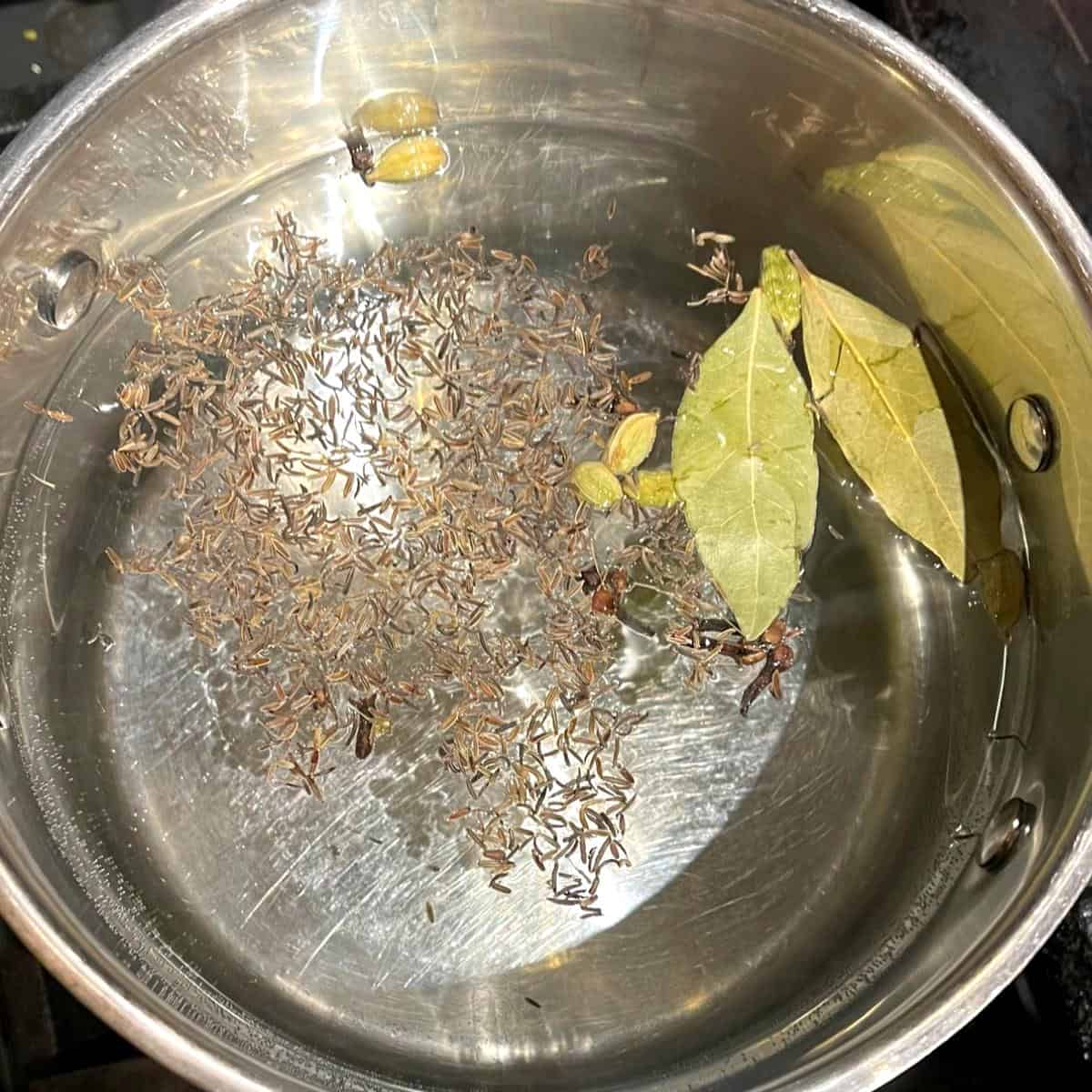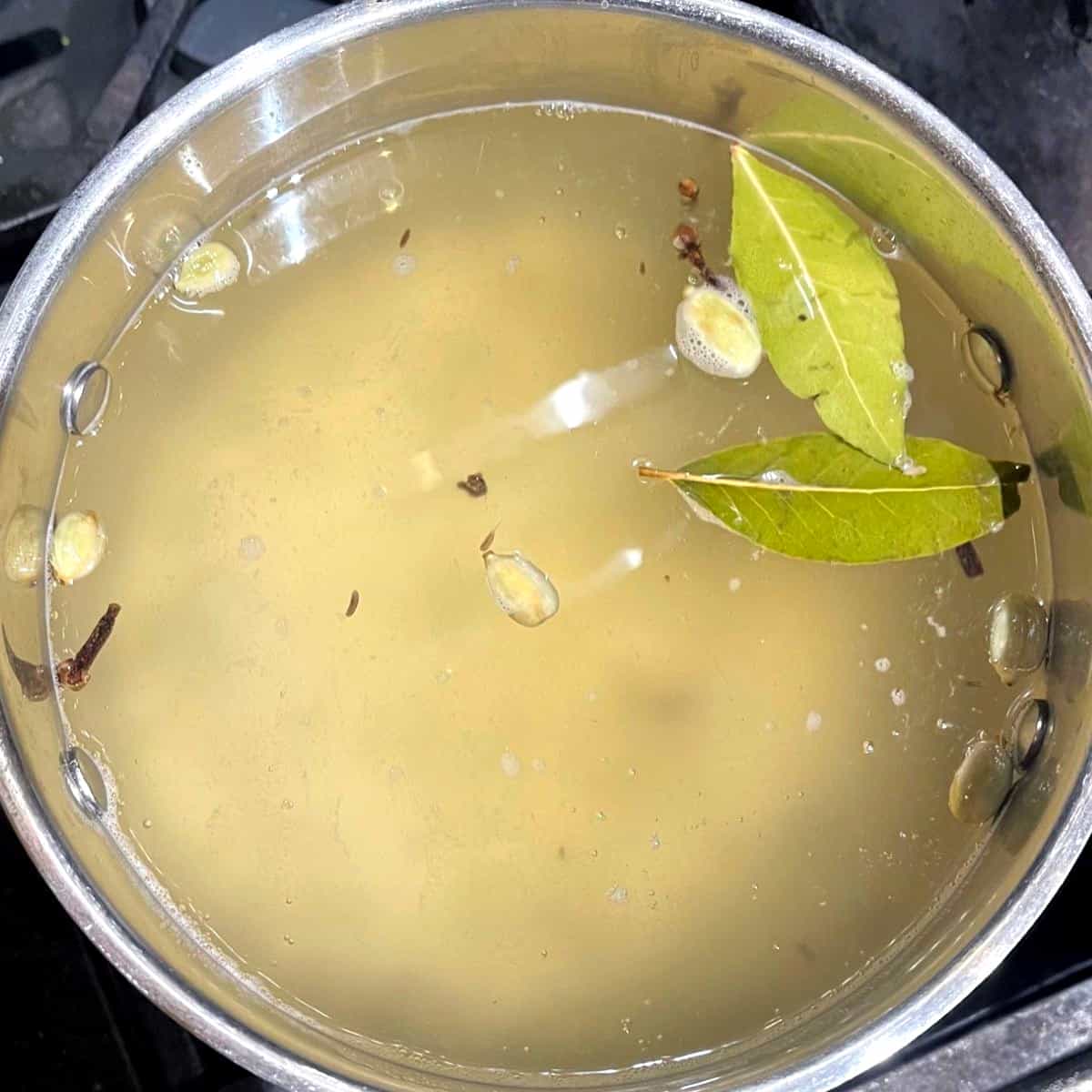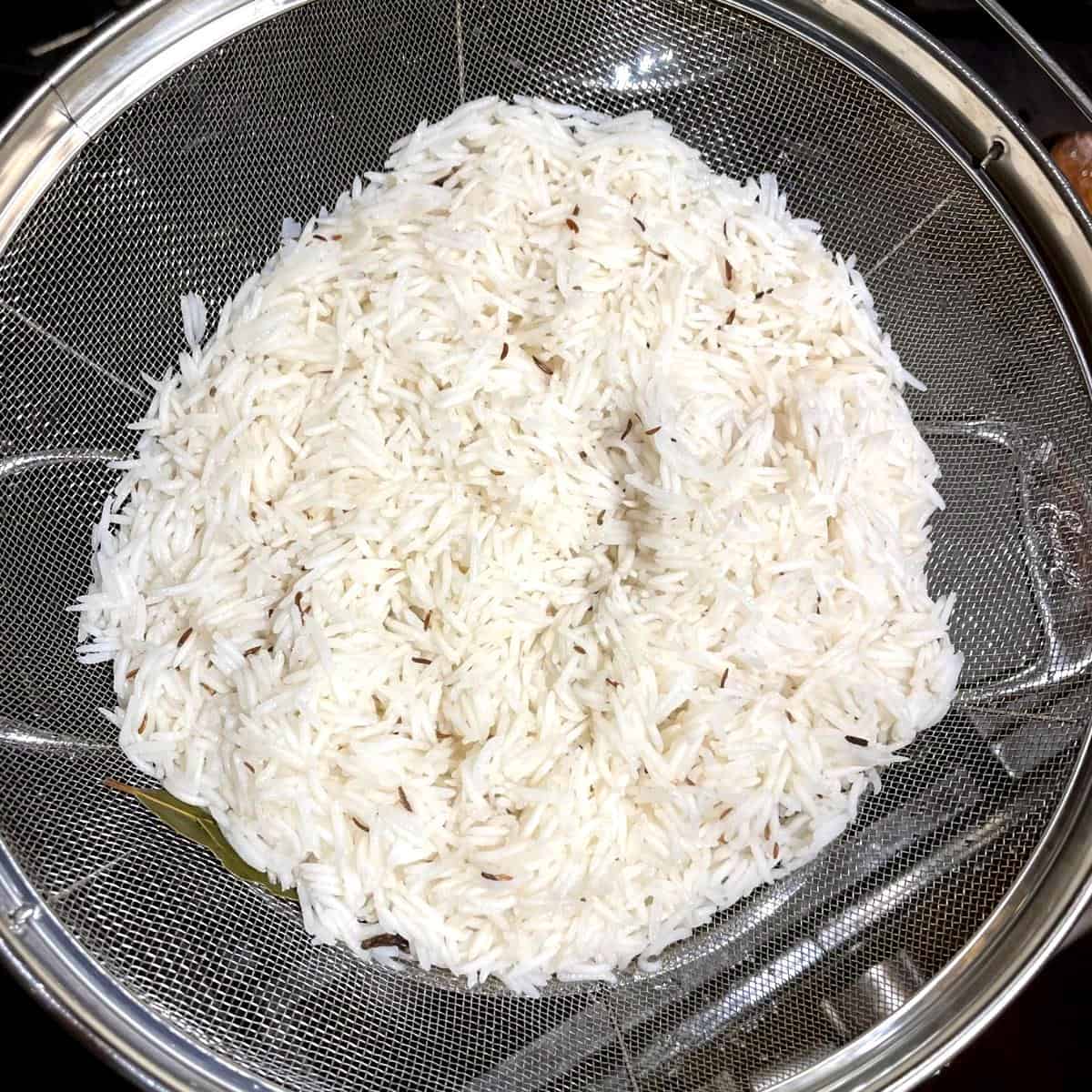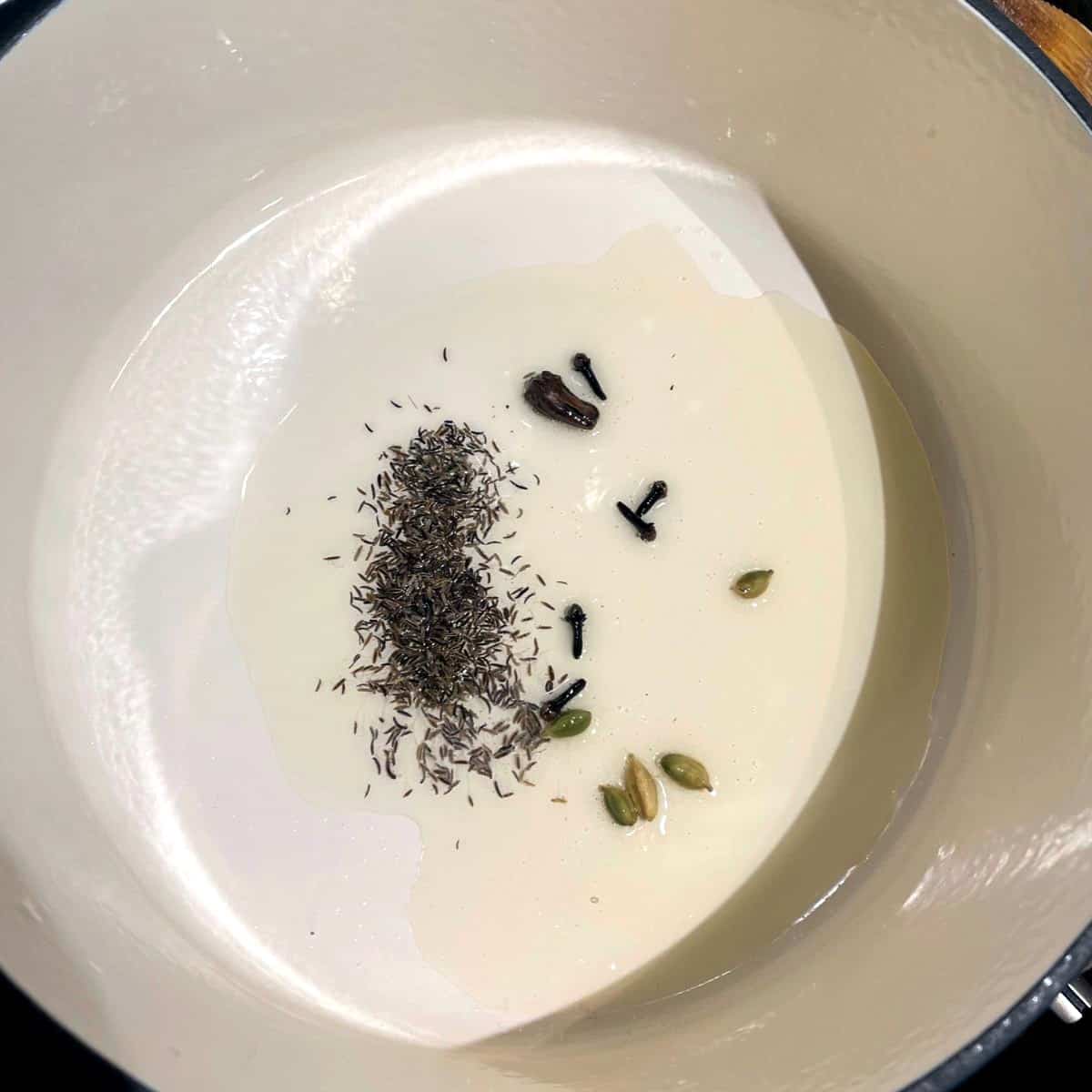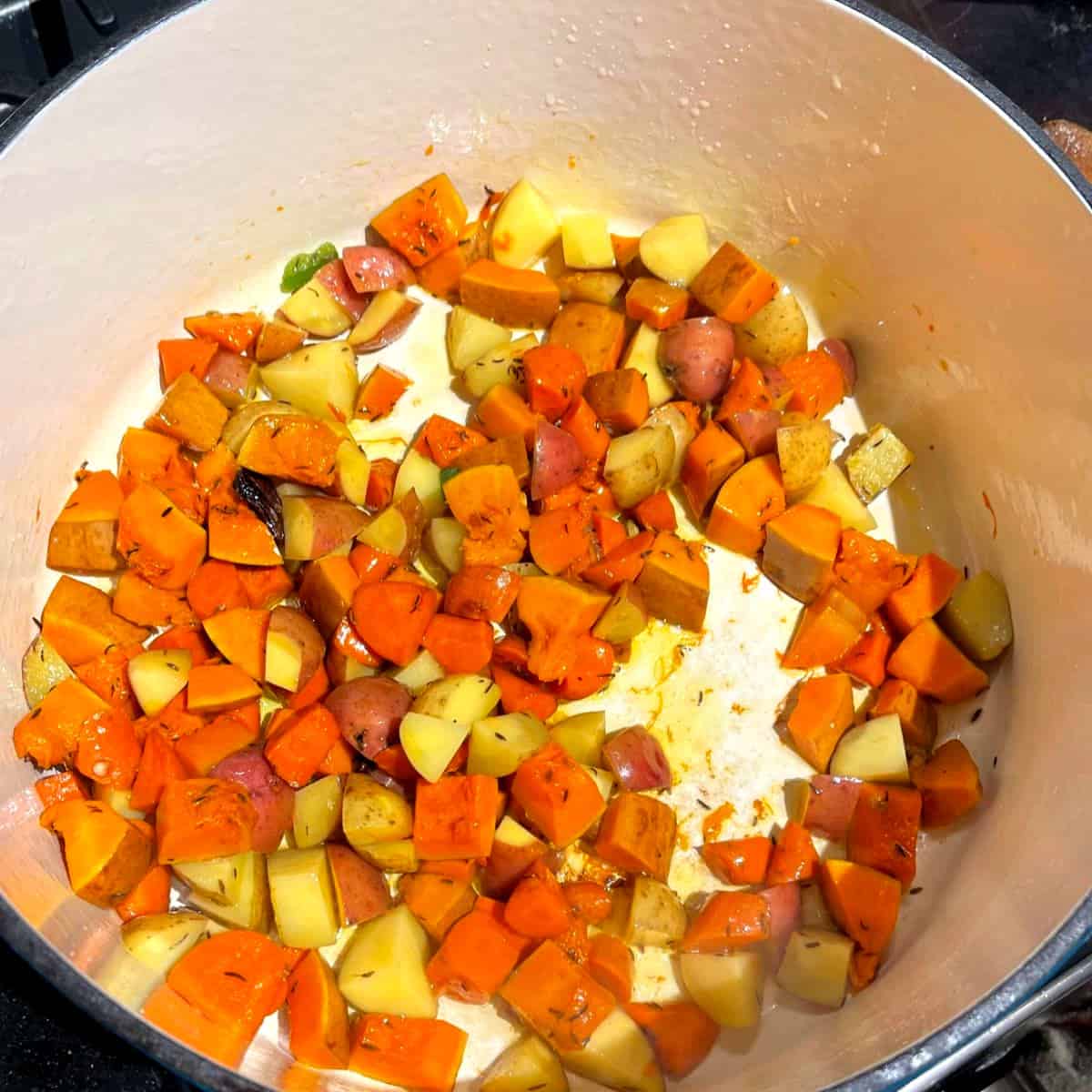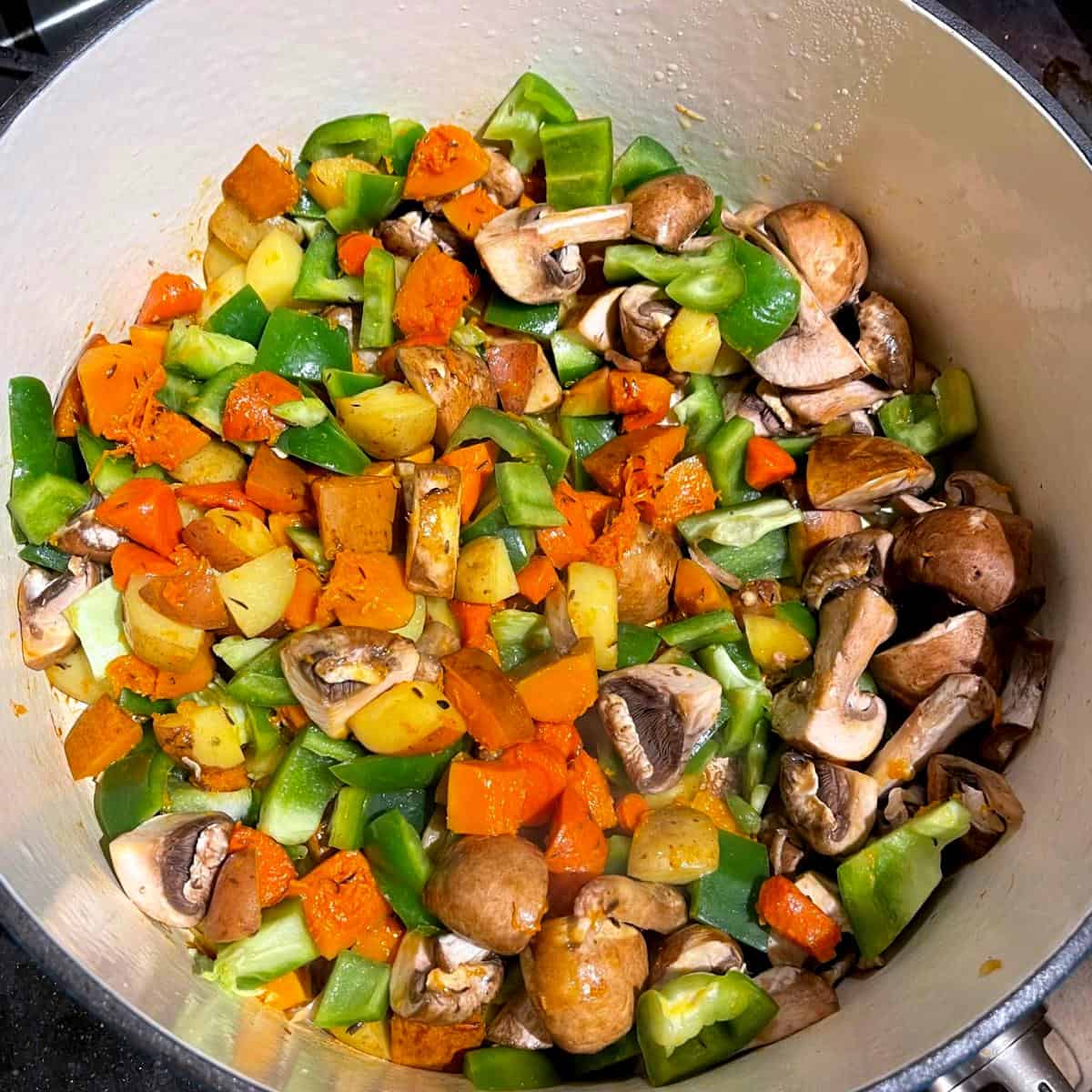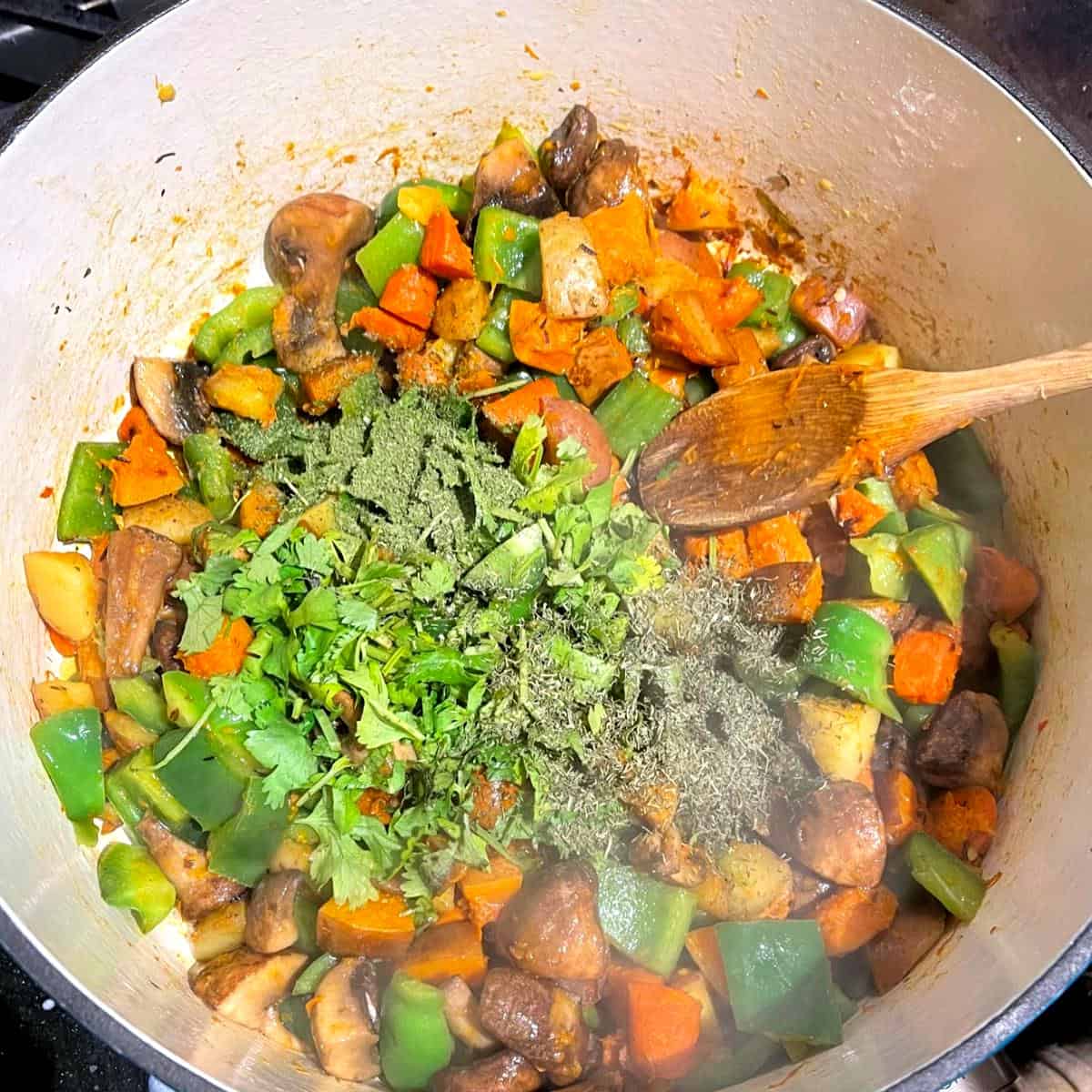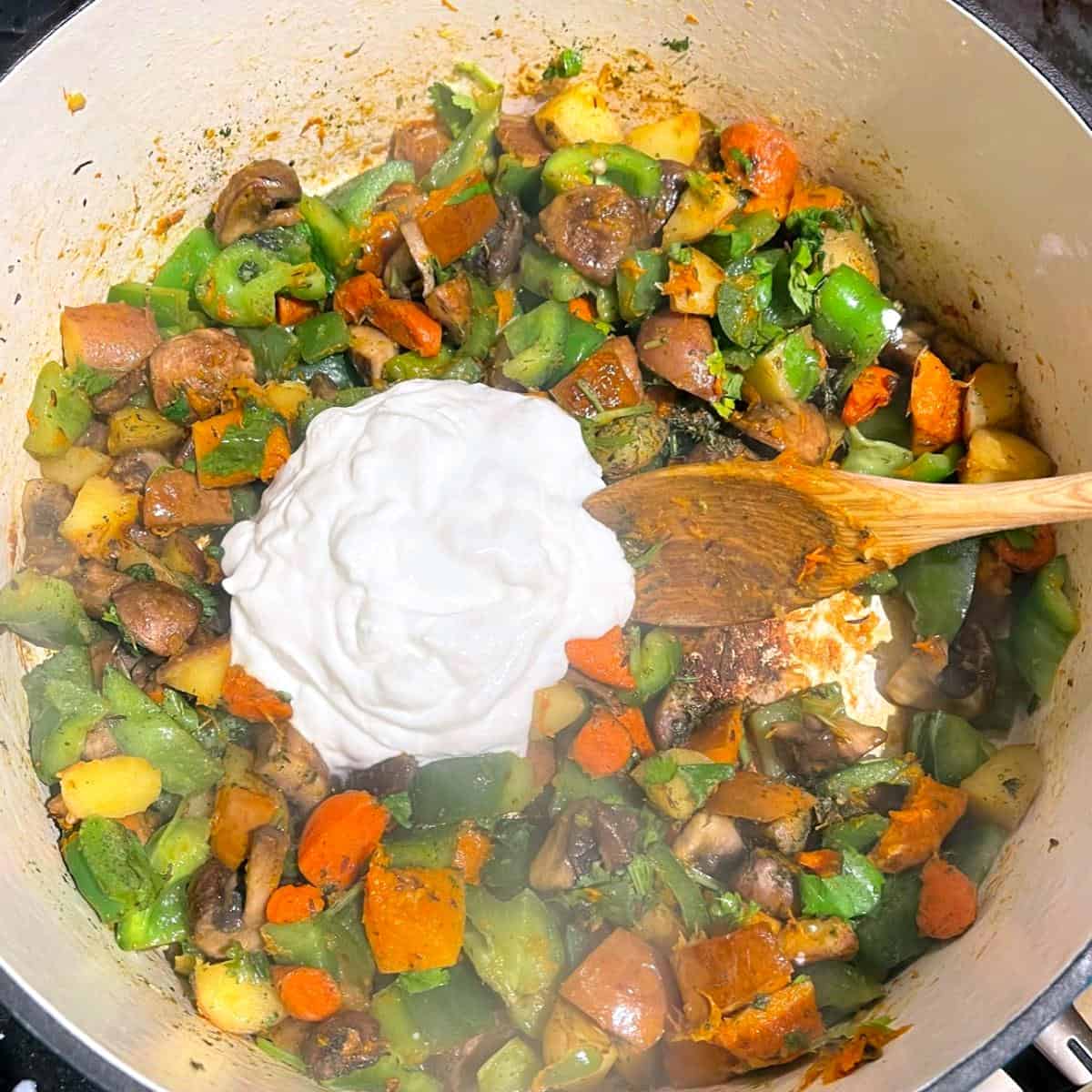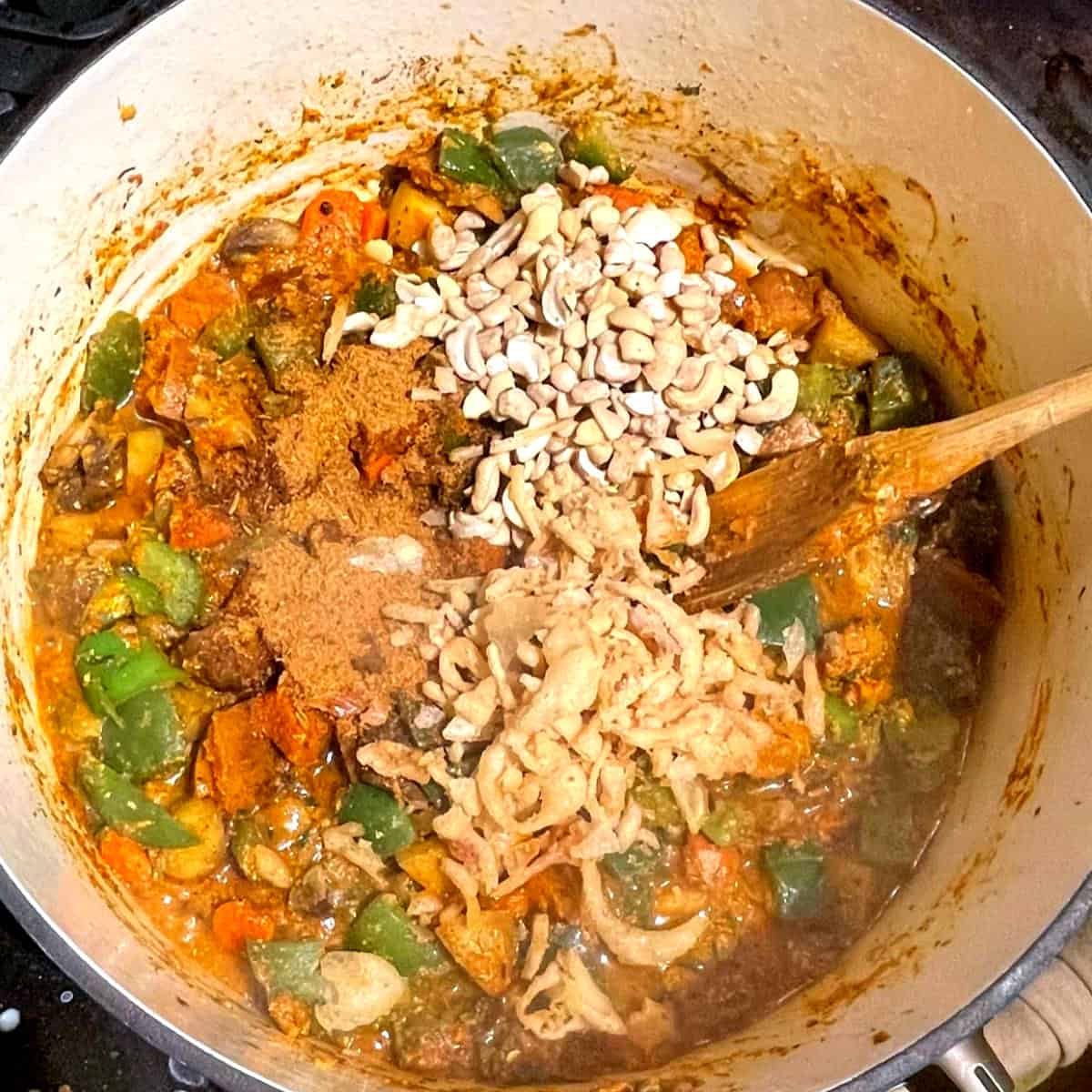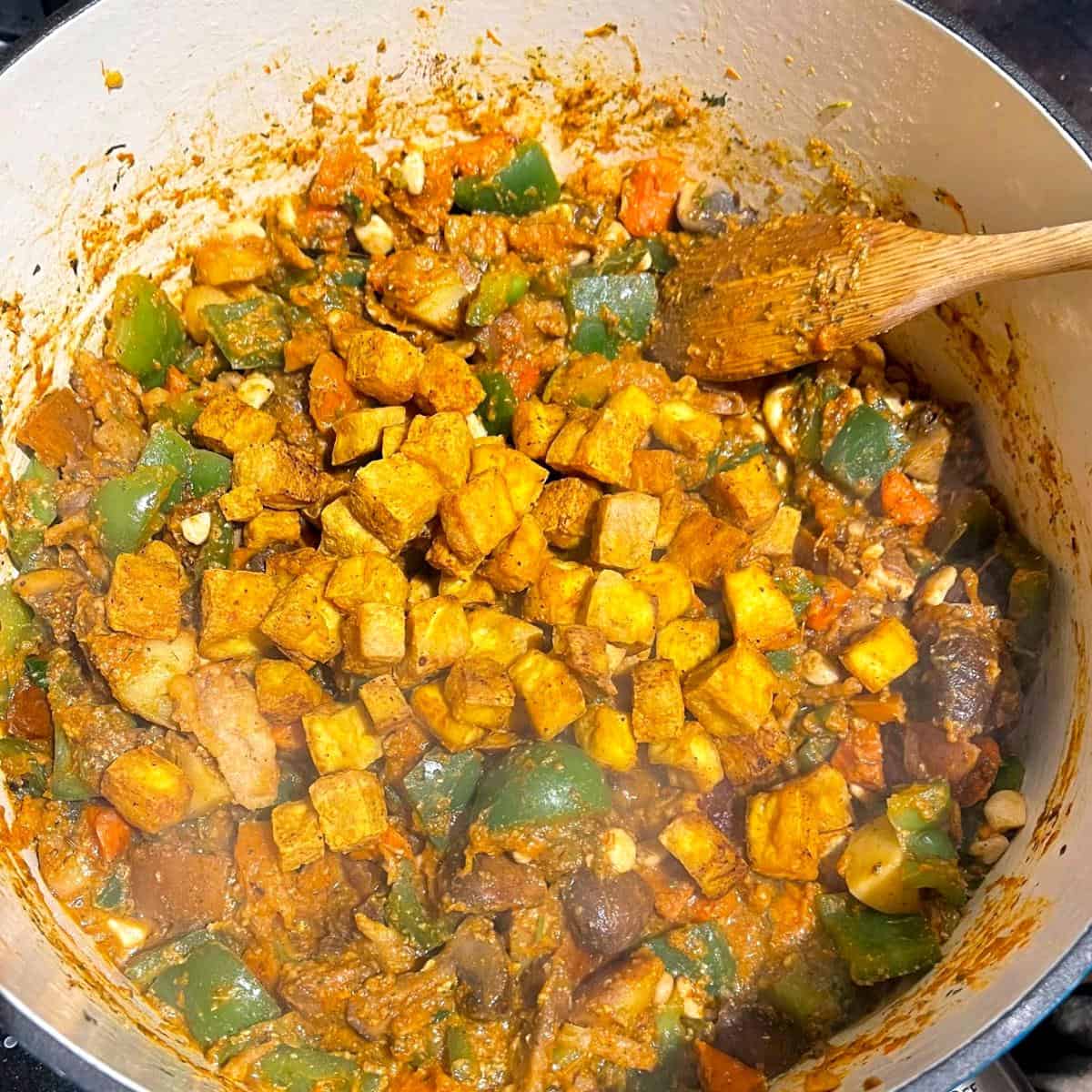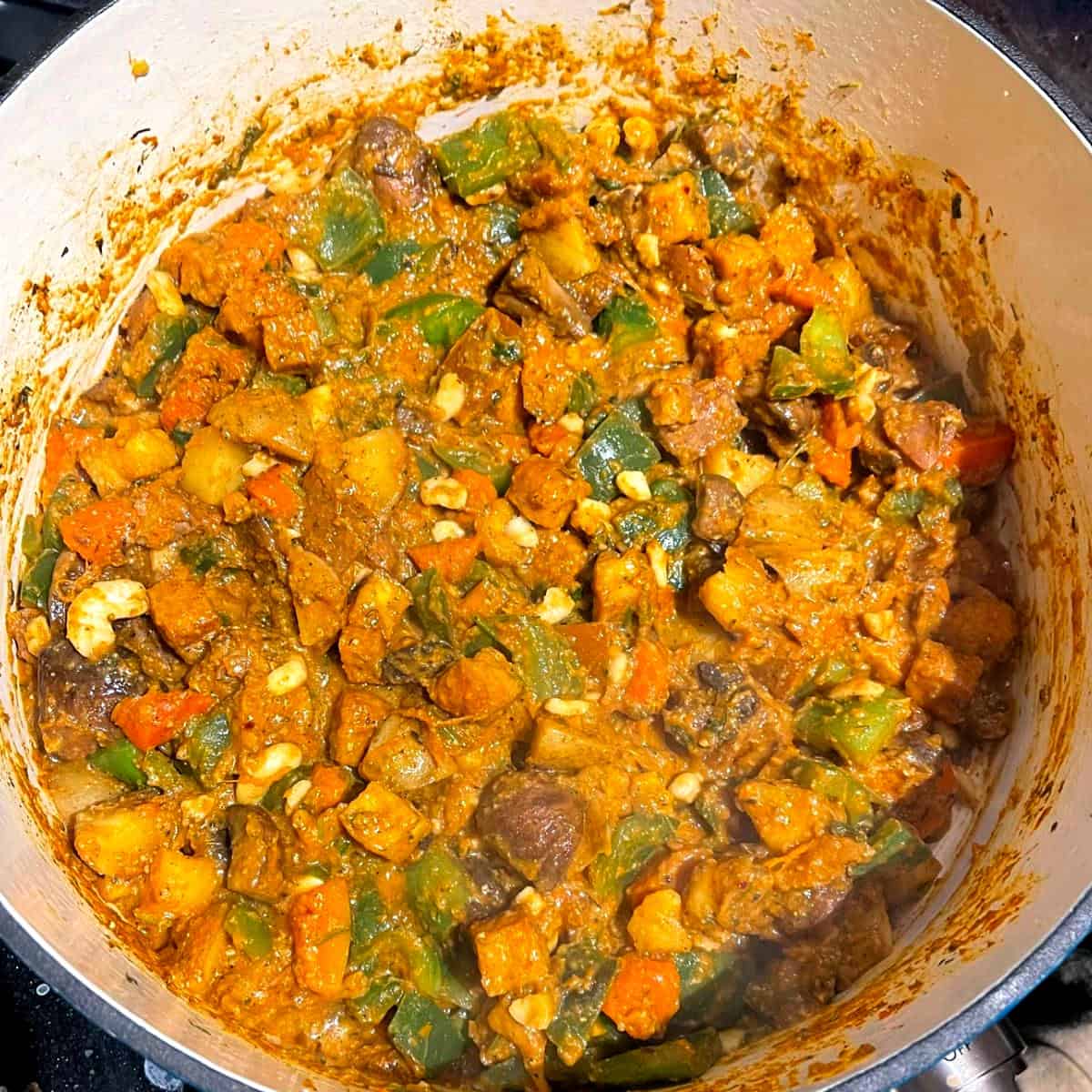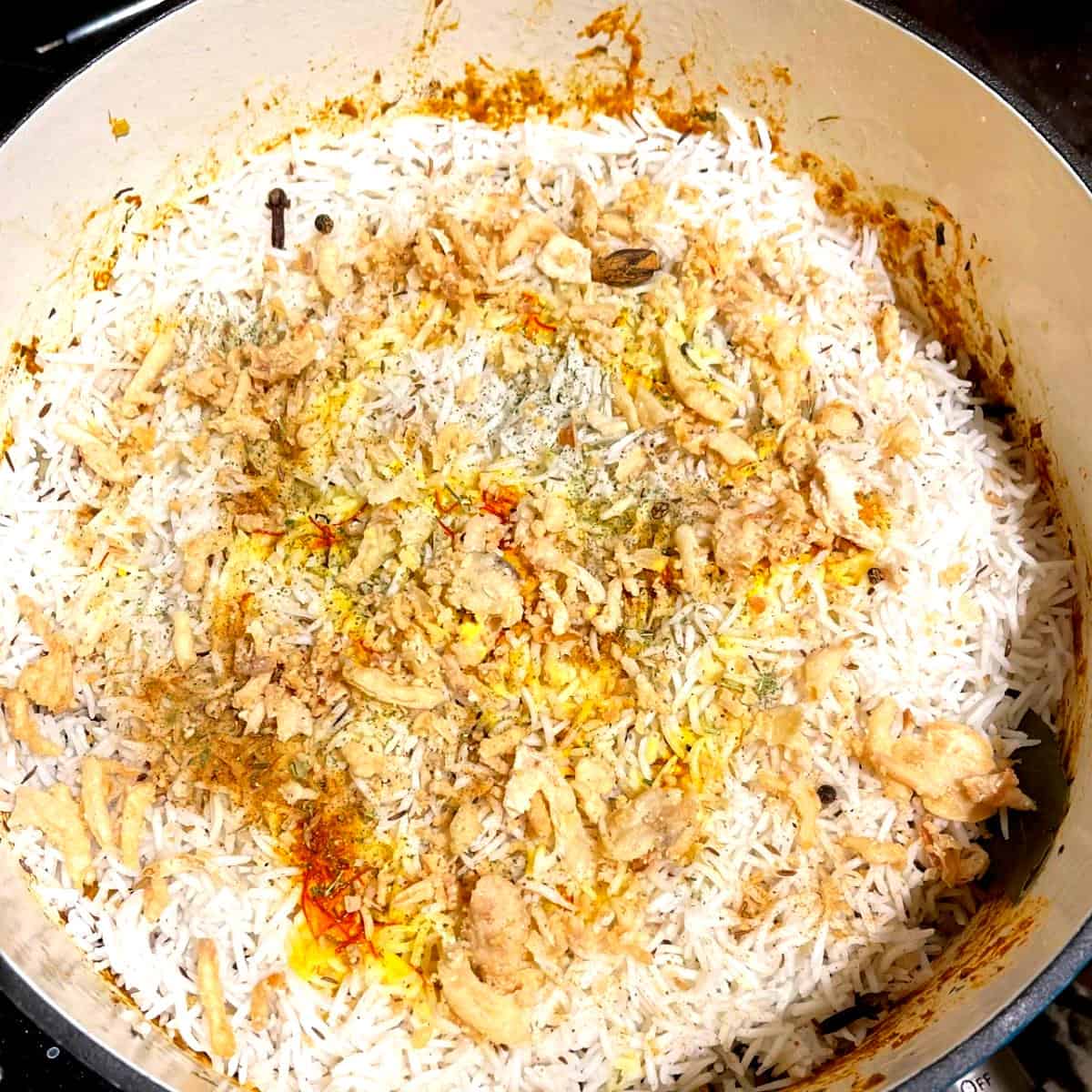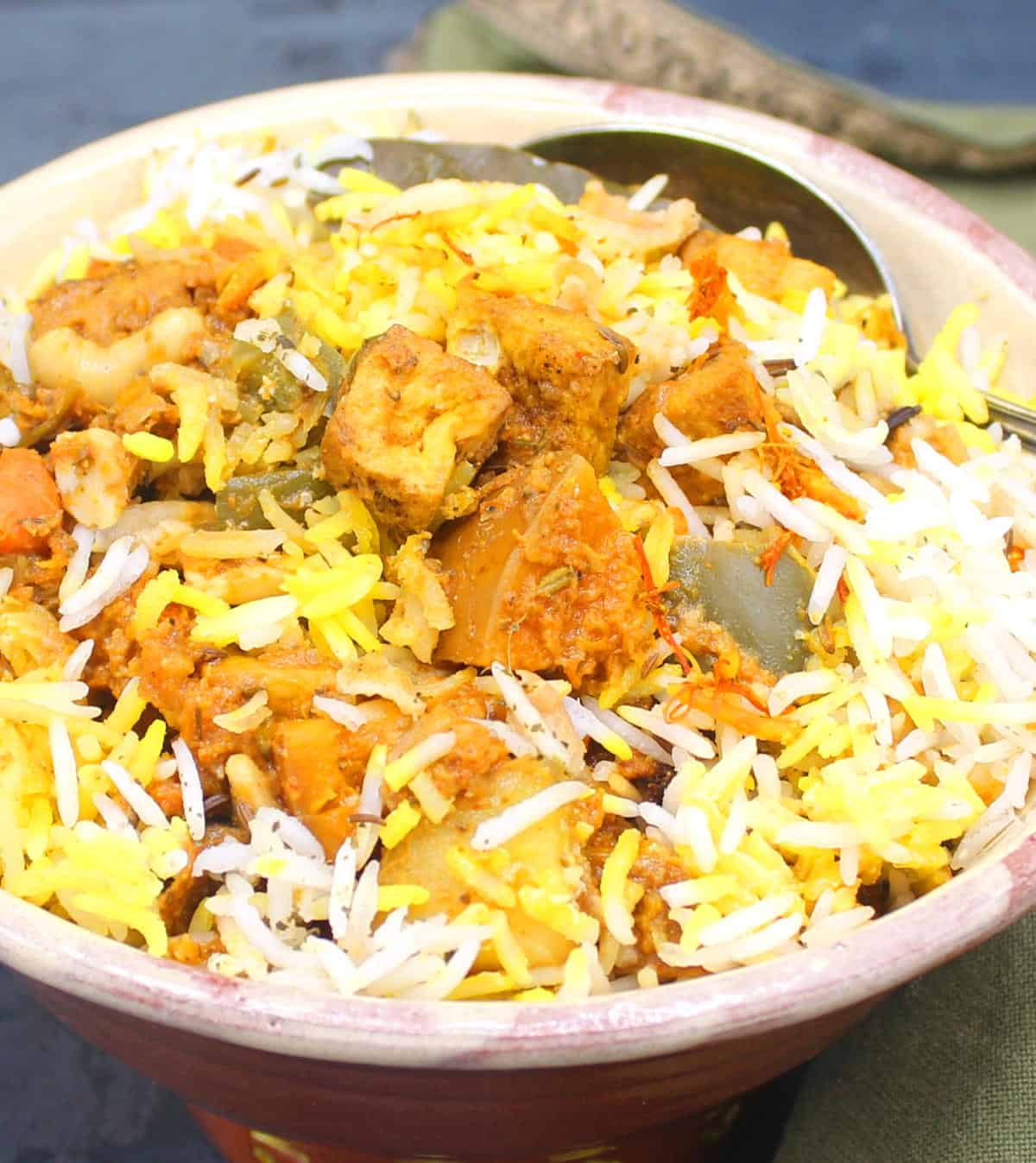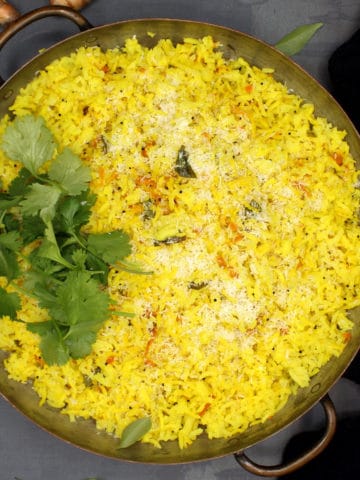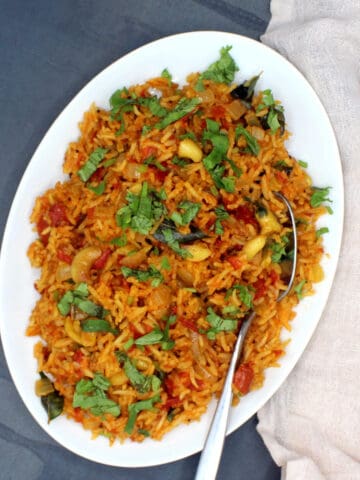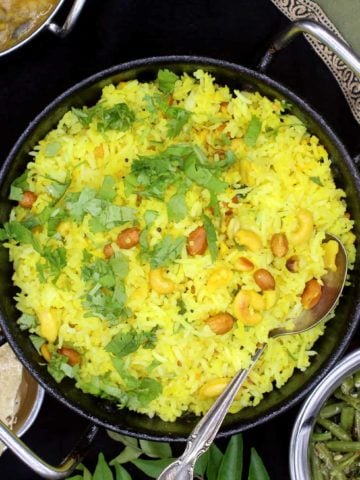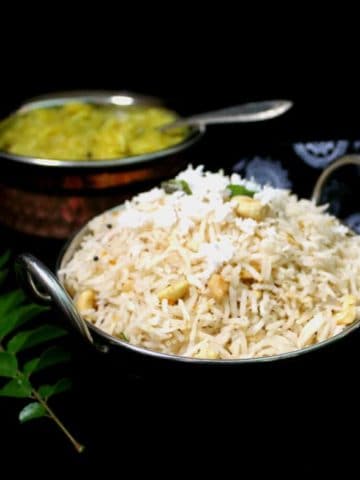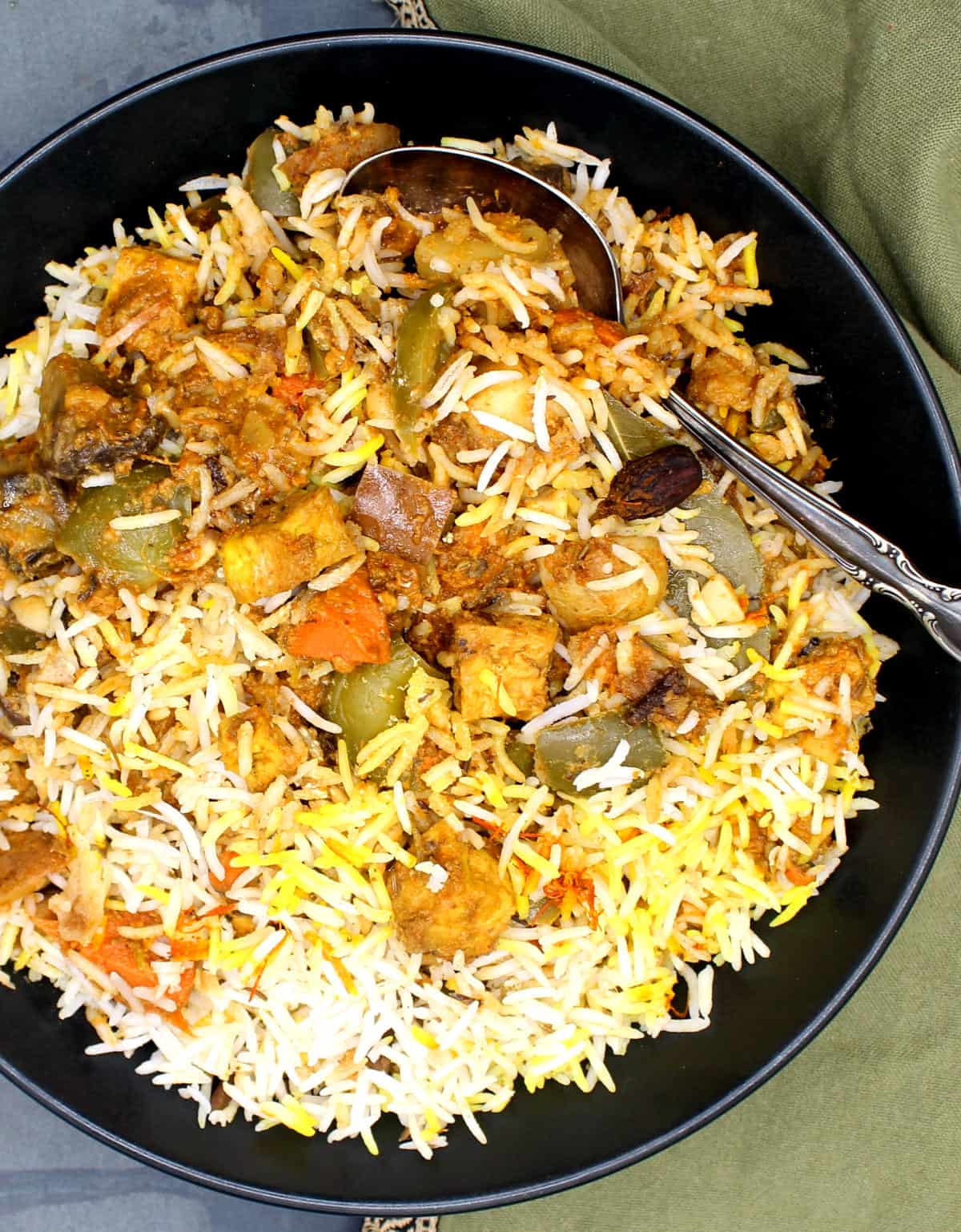Over the years I’ve shared with you countless recipes for biryani, including vegan keema biryani, vegan dum aloo biryani, and mushroom biryani. All are easy to make, but today I have for you the best vegetable biryani you will ever make and eat. Better, you can take it from scratch to done in about 45 minutes. My family loves vegetable biryani but for a long time I believed, as many cooks do, that one needs to set aside a lot of time to make an authentic vegetable biryani. By some accounts, as much as a full day. But who has a whole day or even half a day to cook a single dish? After years of taking the slow approach, I came up with a few techniques that cut down on the time while keeping the dish authentic and delicious. To make this veg biryani recipe we will use all of the same spices and ingredients and all of the same techniques that are used to make a traditional biryani, including cooking it over “dum” or a low flame to help the flavors mingle. We will get the same, true taste of a veg biryani, but in a fraction of the time. The finished biryani is as spectacular as one would expect an authentic Hyderabadi biryani to be: aromatic, long-grain basmati rice is layered over a spicy masala curry, chunky vegetables and (optional) tofu cubes (as a stand-in for paneer) for protein. It is hearty and cozy and an absolute winner. And it’s amazingly healthy as well.
What is biryani?
A biryani is a layered rice dish that’s eaten across parts of the Indian subcontinent. The original recipe is believed to have been brought to India by the Mughals – central Asian invaders – who went on to rule parts of the subcontinent. Among the other gems they contributed to Indian cuisine are samosa, phirni and naan (try this fluffy, homemade vegan naan!). There are versions of biryani made with chicken, mutton (goat), beef, eggs and even fish. But in India, where vegetarians form a sizeable portion of the population, you can easily find vegetarian biryani, called veg biryani, at most restaurants. There are two kinds of biryani: kuchchi (raw) biryani or pakki (cooked) biryani. For a kuchchi biryani the raw rice and marinated meat are cooked together over a slow flame. For a pakki biryani, the rice and meat (or vegetables) are cooked separately, then layered and allowed to steam together for the flavors and aromas to merge. The vegetable biryani recipe we are making is a pakki biryani, because we will cook the rice and the veggies separately, then layer them and continue cooking them together.
Why you will love this recipe
Authentic but easy. It bears repeating that as easy as this recipe is, it tastes like the real thing and it is, in fact, the real thing. But you need a fraction of the time to make it. So, so delicious. Indian cuisine is spectacular, but even so few foods can match up to the allure of a biryani. The contrasting flavors and textures of saffron-soaked basmati rice grains and a spicy masala sauce packed with chunky veggies is fantastic. Vegan, gluten-free, and can be soy-free and nut-free. You can easily skip the tofu or the cashews if you are soy-free or nut-free.
Expert tips
Do a bit of simple multitasking. This is not complicated multitasking by any means. Wash and soak the rice and the saffron in the milk before you begin cooking, then proceed with chopping the veggies and herbs. Start the pot of water for the rice when you begin sauteing the veggies, so the rice and the sauce cook up simultaneously. Season the rice water. You do this just as you would pasta water, only you’ll add a few spices here along with the salt, including cardamom, cloves, shah jeera and bay leaves. Undercook the rice. According to Indian lore, perfectly cooked grains of basmati rice should be like brothers: close, but not stuck together. This is especially important in a biryani, and to get such a result make sure that the rice is no more than 80 percent done when it is layered over the sauce. The rice will continue to cook after layering. Season the layer of cooked rice. This adds tons of flavor and more aroma to the biryani. Sprinkle a bit of biryani masala on top of the rice after layering it over the sauce, and a bit of mint. Also add a handful of fried onions and saffron soaked in milk. You can sprinkle edible kewra water or rose water over the rice for an even more tantalizing aroma.
Ingredients
Basmati rice: This is the only rice you should use for a biryani. Aged basmati rice is wonderful and will give you the best results, because rice, like wine, gets better the longer it stands. However, you don’t have to go looking for aged basmati rice. Just use what you can find. Neutral oil. This is not the dish to use coconut oil or olive oil. Use a neutral, flavorless oil like avocado oil, grape seed oil, sunflower oil or safflower oil. Spices: Saffron, bay leaves, cloves, green cardamom, black cardamom, cinnamon sticks, ground coriander, caraway seeds (shahi jeera) and biryani masala. You can use garam masala instead of biryani masala but it won’t give you the same aroma. Biryani masala is easily found in Indian grocery stores and online. You can skip the black cardamom if you don’t have it and use cumin seeds instead of the caraway seeds. Herbs: ginger garlic paste, cilantro, dried mint and dried dill. In summer use fresh mint leaves and fresh dill leaves, if possible. Vegetables: carrots, potatoes, butternut squash, mushrooms and green bell peppers. I used about six cups of these vegetables. You can change them up. Green peas, cauliflower, green beans, summer squash and sweet potatoes would all be great additions to this biryani. Vegan yogurt. I use my homemade cashew yogurt but any nondairy yogurt is fine. Make sure it is unflavored and unsweetened. Non-dairy milk. This is for soaking the saffron. Raw cashews. These add nice crunch and nuttiness. Super firm or extra firm tofu (optional). Tofu is a great paneer substitute in Indian recipes. I like adding the tofu for protein and it adds yet another layer of texture. Super firm tofu holds its shape nicely in the biryani sauce, but you can use extra firm tofu with water pressed out. You can add the tofu as is, but I sometimes coat the tofu cubes in a bit of turmeric and salt and roast it in the air fryer to make it chewier. If you do this, follow the instructions in my air fryer tofu recipe. Fried onions. You can make your own by deep-frying slivers of onion, but I just use store-bought fried onions like French’s or a similar product available for a much lower price at Aldi.
Variations for special diets
Soy-free: Skip the tofu and use a soy-free yogurt. Nut-free: Skip the cashews and use pumpkin seeds instead, or skip them altogether. Use a nut-free yogurt. Low-carb. Skip the potatoes, carrots and squash and use cauliflower, mushrooms, bell peppers, and summer squash like zucchini or yellow squash. Also replace the rice with cauliflower rice (or check out this keto-friendly cauliflower rice biryani). You don’t need to cook the cauliflower rice first.
How to make vegetable biryani
Skip to the recipe card for detailed instructions. The recipe card includes a video recorded when I first posted this recipe. I’ve tweaked the recipe since but you can still follow the video for technique and instructions. Check to get new recipe updates by email.
Serving suggestions
This biryani is perfect eaten by itself, but I love it with vegan cucumber raita. In Hyderabad, where some of India’s best biryani is made, this rice dish would be served with a spicy mirch ka salan.
Storage instructions
Refrigerate: Store leftovers in the fridge for up to three days. Freeze: Freeze the biryani in an airtight container or freezer-safe container for up to three months. Reheat: Thaw and reheat in the microwave or in a covered, oven-safe pot or bowl in an oven set to 350 degrees.
More delicious Indian rice recipes
Did you make this recipe? Leave a review and a star rating below or tag us on Instagram! Thanks!
Recipe card
